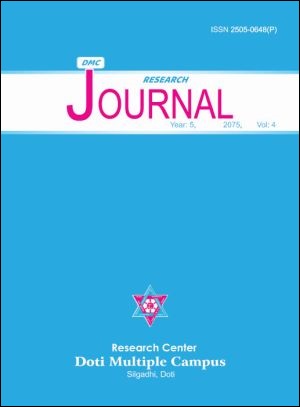A Glance on Human-Wildlife Conflict: Basanta Community Forest of Kailali District
DOI:
https://doi.org/10.3126/dmcrj.v4i1.44219Keywords:
Crop damage, compensation, Human-wildlife conflict, livestock depredation, perception, property damageAbstract
This study focuses on various aspects of Human-wildlife conflict in Basanta community forest of Kailali district. The human wildlife conflict is at increasing trend and has become one of the challenging problem for the ruralcommunities. The main objective of this study was to explore over all the human-wildlife conflict events in the study area. Focus group discussion, Key informant survey and questionnaire survey were carried out during data collection. Data were analyzed using descriptive analysis such as percentage, mean, frequency etc. and were presented in figures, bar diagrams and charts. This study showed that the crop damage, property damage, livestock damage were common and the wild animals like elephant, wild boar, blue bull, tiger, deer were more responsible for the conflict in the recent years.
Socio-economic indicators such as gender status, educational level, religion, land tenureship, income source, and ethnicity were calculated. The major crops grown in the area were rice, wheat, maize, masuro, sugarcane etc. According the respondents, rice, wheat, maize had been damaged mostly during the previous year. Except elephant, blue bull and wild boar was the most problematic animal during the season.Managed compensation schemes, Environmental awareness programs and public participation are the major aspects that should be considered to mitigate the human wildlife conflict in the area.




